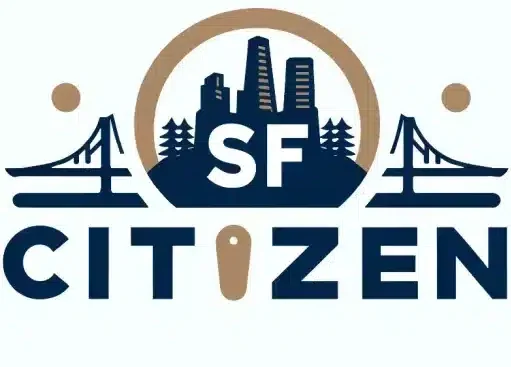In 2021, San Franciscans made an impressive 4.7 million trips on bicycles, thanks to the city’s commitment to enhancing bike infrastructure. The San Francisco Municipal Transportation Agency (SFMTA) plays a crucial role in implementing bike projects and improving safety for cyclists. These initiatives have a significant impact on public transportation and urban mobility in the city.
In This Article
Key Points
- San Francisco is dedicated to enhancing bike infrastructure, with over 463 miles of bike lanes, paths, and trails
- The SFMTA is a key player in implementing bike projects and improving cyclist safety
- Bike projects have a substantial impact on public transportation and urban mobility in San Francisco
The SFMTA Bike Program: A Catalyst for Change
The Evolution of the SFMTA Bike Program
The SFMTA Bike Program has come a long way since the early 1990s when cycling in San Francisco was a daunting task. Chris Carlsson, an author and historian, recalls the challenges of commuting by bike on Market Street during that time, with motorists often hurling verbal abuse and even attempting to cut off or bump cyclists off the road. However, the SFMTA has made significant strides in recent years, expanding and upgrading the city’s bike infrastructure.
Bicycle Safety Initiatives in San Francisco
The SFMTA has implemented various programs and policies to reduce bike accidents and improve safety for cyclists. These initiatives involve collaboration with local communities to create safer streets for all users. Some of the key safety measures include:
- Installation of lime-green bike lanes and barriers to discourage drivers from entering bike lanes
- Designation of bike routes and slow streets to provide cyclists with safer alternatives away from heavy traffic
Funding and Support for Bike Projects
Funding for bike infrastructure in San Francisco comes from various sources, including public and private partnerships. The SFMTA works closely with organizations like the San Francisco Bicycle Coalition to secure funding and support for bike projects. In the past, funding sources have included:
- AB 434 legislation, which allowed an assessment of $4.00 per vehicle on auto registrations for air quality enhancing projects
- ISTEA funding for median relocation and street improvements on Lake Merced Boulevard to provide widened curb lanes
Enhancing Bike-Friendly Streets in San Francisco
Bike Network Expansion in SF
The SFMTA has ambitious plans to expand the city’s bike network, with new bike lanes and routes in the works. The agency’s strategy involves connecting existing bike paths to create a more cohesive and accessible network for cyclists. Some of the key bike projects currently underway include:
- The Valencia Street Bikeway Project, which aims to improve safety and connectivity for cyclists along this popular corridor
- The “Spot” Improvement Program, which focuses on enhancing pavement striping, rack installation, and pavement maintenance
Bike Parking Solutions in San Francisco
In addition to expanding the bike network, the SFMTA is also working to improve bike parking facilities throughout the city. The agency recognizes the importance of providing secure and convenient parking options for cyclists. Some of the innovative bike parking solutions being implemented include:
- Installation of bicycle lockers and racks in high-demand areas
- Collaboration with local businesses to provide bike parking for customers and employees
Bicycle Accessibility and GIS Analysis
The SFMTA uses Geographic Information Systems (GIS) analysis to plan bike-friendly routes and assess accessibility for different demographics. By analyzing factors such as traffic stress levels and energy consumption, the agency can make data-driven decisions to improve the cycling experience for all users.
Addressing Traffic Stress and Promoting Biking
The Relationship Between Traffic Stress and Biking
Studies have shown that traffic stress is a significant factor in determining whether people choose to bike or not. High levels of traffic stress can deter potential cyclists, while low-stress environments encourage more people to ride. The SFMTA is working to reduce traffic stress for bikers through various measures, such as:
- Creating protected bike lanes and separated bikeways
- Implementing traffic calming measures in residential neighborhoods
Energy Sustainability and Biking
Biking plays a crucial role in San Francisco’s sustainability goals, as increased bike commuting can lead to significant reductions in energy consumption and greenhouse gas emissions. The SFMTA is committed to promoting biking as a sustainable transportation option and has set ambitious targets for increasing the mode share of cycling in the city.
Bike Commuting in San Francisco: Data and Trends
Analysis of Bike Commuting Data in SF
The SFMTA regularly analyzes bike commuting data to identify trends and assess the impact of infrastructure improvements on ridership. Some of the key findings from recent data analysis include:
- Bike commuting rates have increased steadily over the years, with significant growth in the past decade
- Infrastructure improvements, such as the installation of protected bike lanes, have led to increased ridership in specific corridors
Bikeway Facilities in the Bay Area
San Francisco offers a diverse range of bikeway facilities, including Class I (off-street paths), Class II (on-street bike lanes), and Class III (shared roadways) facilities. The SFMTA recognizes the importance of providing a variety of bikeway options to cater to different skill levels and preferences among cyclists.
The Future of Biking in San Francisco
Bicycle Infrastructure Preferences and Planning
The SFMTA actively seeks community input when planning new bike infrastructure projects. By understanding the preferences and needs of local cyclists, the agency can design facilities that meet the demands of the community. Public workshops, surveys, and online engagement tools are some of the methods used to gather feedback and ideas from residents.
Valencia Street Bikeway Project and Other Key Initiatives
The Valencia Street Bikeway Project is one of the most significant bike infrastructure projects currently underway in San Francisco. This project aims to create a safer and more comfortable cycling environment along Valencia Street, a popular corridor for cyclists. The SFMTA is also working on several other key initiatives, such as:
- The “Wiggle” Neighborhood Green Corridor Project, which will improve safety and connectivity for cyclists and pedestrians in the Lower Haight and Duboce Triangle neighborhoods
- The Golden Gate Park Bike Network Improvement Project, which will enhance bike facilities and wayfinding within the park
Low-Stress Bicycling and the Built Environment
Creating a low-stress biking environment is essential for encouraging more people to ride. The SFMTA is working to identify and address factors in the built environment that contribute to high-stress cycling experiences. By making strategic improvements to the physical infrastructure, such as widening bike lanes and providing buffer zones between cyclists and motor vehicles, the agency aims to create a more inviting and comfortable cycling environment for all users.
FAQ
What are the different types of bikeway facilities in San Francisco?
San Francisco offers three main types of bikeway facilities:
- Class I: Off-street paths that are completely separated from motor vehicle traffic
- Class II: On-street bike lanes that are designated with striping and signage
- Class III: Shared roadways where cyclists and motorists share the same space
How does the SFMTA ensure bicycle safety in its bike programs?
The SFMTA employs various strategies to ensure bicycle safety, including:
- Installing protected bike lanes and separated bikeways
- Implementing traffic calming measures in residential neighborhoods
- Collaborating with local communities to create safer streets for all users
What are the major bike projects currently underway in San Francisco?
Some of the major bike projects currently underway in San Francisco include:
- The Valencia Street Bikeway Project
- The “Wiggle” Neighborhood Green Corridor Project
- The Golden Gate Park Bike Network Improvement Project
How does bike parking availability affect bike commuting in San Francisco?
Bike parking availability is a crucial factor in encouraging bike commuting. The SFMTA is working to improve bike parking facilities throughout the city by installing bicycle lockers and racks in high-demand areas and collaborating with local businesses to provide bike parking for customers and employees.
How is GIS analysis used in planning bike-friendly streets?
The SFMTA uses GIS analysis to plan bike-friendly routes and assess accessibility for different demographics. By analyzing factors such as traffic stress levels and energy consumption, the agency can make data-driven decisions to improve the cycling experience for all users.

